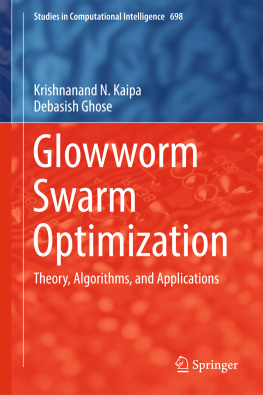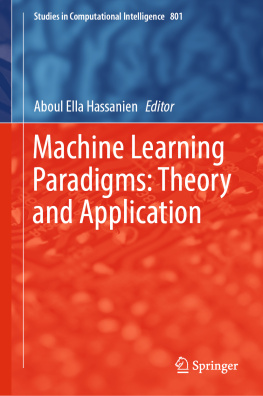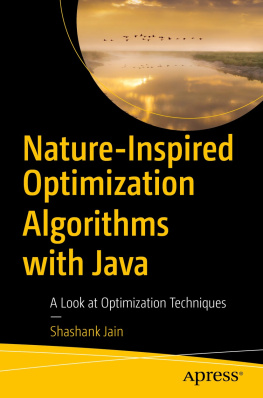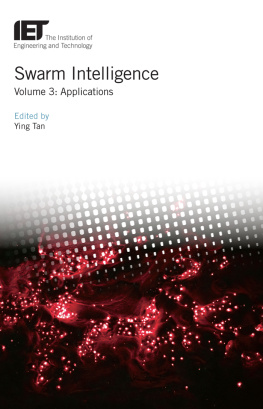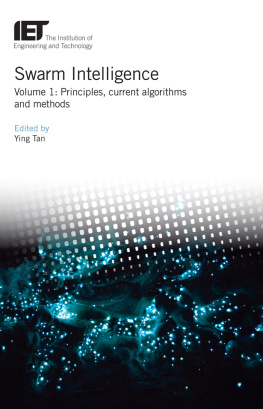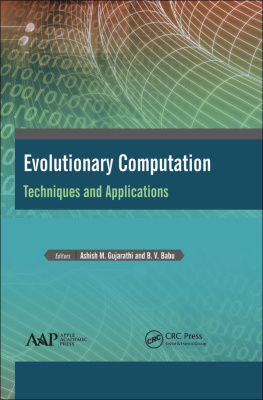Nature abounds in examples of swarming , a form of collective behavior found in insect and animal societies. Glowworms use simple signaling and attraction mechanisms to congregate into large swarms for the purpose of mass mating. Ants use trail-laying and trail-following behaviors to self-organize into complex foraging patterns; ants gathered in groups can carry prey that are so large that if they were fragmented, the members of the group would be unable to carry all the fragments individually. Honeybee swarms use group decision making to find a future nest: some of the bees, called scout bees, find potential sites in all directions and advertise a dozen or more of them to recruit other bees to visit these sites, but eventually they reach a consensus about a single site. Schooling in fish serves to confuse a predator. Birds that gather in large flocks for migrations achieve aerodynamic efficiency, higher than that of a single bird, leading to reduced fatigue and higher chances of survival at the end of the migration. The decentralized mechanisms responsible for the swarm intelligence found in these examples, and others in the natural world, offer an insight into the basis to synthesize artificial techniques that can be applied to diverse fields such as optimization, multi-agent decision making, and collective robotics.
The focus of this book is glowworm swarm optimization (GSO), a swarm intelligence algorithm inspired by the behavior of glowworms (also known as fireflies or lightning bugs). GSO is originally developed for numerical optimization problems that involve computing multiple optima of multimodal functions, as against other swarm intelligence algorithms which aim to identify the global optimum. The problem that GSO solves is inspired by swarm robotics applications involving search for unknown signal sources. GSO belongs to a broad class of synthetic swarm algorithms that are modeled after natural swarms. These algorithms are usually based on designs in which the artificial agent protocols either closely, or loosely, mimic the individual behaviors of their natural counterparts; in other frameworks, the agent rules are borrowed from those of their real counterparts and modified to some extent based on the target problem. The rest of this chapter deals with a description of the decentralized mechanisms observed in natural swarms. Later, how computer scientists and engineers translated some of these mechanisms into their synthetic counterparts that could solve problems in optimization and robotics, will be discussed.
1.1 Natural Swarm Intelligence
Swarm intelligence (SI), as observed in natural swarms, is the result of actions that individuals in the swarm perform exploiting local information, which is communicated, indirectly through the environment, by their neighbors [18]. One example of this swarming phenomenon that is well established and extensively studied is the group foraging by ants: An ant lays a chemical called pheromone on its way during its search for food, thus forming a pheromone trail; when a food source is found, it returns back to the nest, while simultaneously reinforcing the retraced trail with more pheromone. However, when another ant randomly searching for food encounters a pheromone trail by chance, it starts to follow the pheromone trail, with a high probability, and continues to lay its own pheromone, thereby further reinforcing the trail being followed; at a intersection of two trails, it selects to follow, with a higher probability, the trail with the higher pheromone level; eventually, it reaches either the food source or the nest. As the pheromones decay with time, pheromone trails that are circuitous and less visited by ants may be quickly lost in the due course of time; however, shorter routes between the food source and nest may be positively reinforced frequently enough before they are lost. This process eventually results in the emergence of a shortest route between the nest and the food source.
It can be seen in the above example how ants use pheromone trails collectively to exhibit swarm behavior. However, the method of communication and/or the purpose of swarming might differ from one species to another. For instance, honeybees use waggle dances performed by other honeybees as cues to find the direction and distance to food sites. Glowworms exploit the property of bioluminescence in a variety of ways for the purposes of mating and species preservation. As this book deals with an optimization algorithm modeled after the behavior of glowworms, the swarm intelligence principles observed in these luminous insects are discussed next.
1.1.1 Glowworm Swarms
Stroll into the meadows on a dark summer night and you may catch a glimpse of glowworms that illuminate the night with brilliant flashes of light, thereby, making themselves conspicuously visible over long distances. The term glowworm commonly refers to the larvae of fireflies (also known as lightning bugs) [8, 124]. Fireflies spend most of their lifetime as glowworms, that is, in the larval stage (two to three years versus a few weeks as an adult) [30]. Therefore, the terms adult glowworms, fireflies, and lightning bugs can be used interchangeably. In this book, they are just called glowworms, unless a different usage is required by the context.
Glowworms produce an emission of natural glow through a process called bioluminescence [194]. They belong to a family of beetles (Order: Coleoptera ) called Lampyridae ; together with Phengodidae and Rhagophthalmidae , they represent one of the few insect families in the whole of the animal kingdom that exhibit the power of emitting natural light [16]. However, this property is shared by other animals such as Protozoa (e.g., Noctiluca ), Hydrozoa (e.g., Pyrosoma ), several molluscs, and some vertebrates (e.g., some kind of fish). As a matter of fact, about 80 to 90 percent of the ocean life is composed of bioluminescent creatures [218], which also form about 80 percent of all the 700 genera known to contain luminous species [217].
An intermittent flashing of glowworms, typically found on open grounds (e.g., meadows, forest glades, and road clearings) of the West, is a very common sight [16]. However, a rather rare, and a strikingly remarkable, phenomenon is their complex swarming behavior: Hundreds of glowworms assemble on trees in large congregations and flash synchronously [21, 22, 70, 153, 198]. Several first-hand accounts of this unique group behavior have been reported in the literature (Refer to [70, 156] for a summary). Two of these accounts, based on the glowworm swarms found along the broad stretch of the Maenam Chao Phraya river in Thailand (formerly called Siam), are quoted here for a better visualization of this entrainment effect:
Engelbert Kaempfer, 1690 [70]: The Glowworms (Cicindalae) represent another shew, which settle on some Trees, like a fiery cloud, with this surprising circumstance, that a whole swarm of these Insects, having taken possession of one Tree, and spread themselves over its branches, sometimes hide their Light all at once, and a moment after make it appear again with the utmost regularity and exactness, as if they were in a perpetual Systole and Diastole.

